|
Guy Martin à Beckett BOYD
1923-1988 |
|
If you love
Fine Art of
impeccable
provenance,
the
art
you want is at
Galeria Aniela
|
|
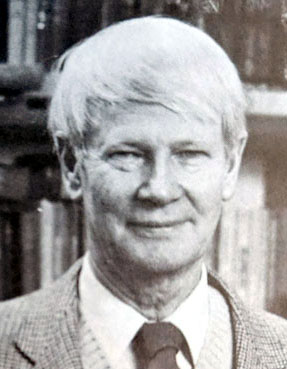 A
member of
the Boyd artistic family,
Guy Martin à Beckett Boyd
is
Australian's most significant figurative
sculptor. A
member of
the Boyd artistic family,
Guy Martin à Beckett Boyd
is
Australian's most significant figurative
sculptor.
In 1968
Guy Boyd won a Churchill
Fellowship to
work overseas.
He was
famous for his ability to capture the fluidity and sensuality of the female form.
Guy Boyd had held one-man exhibitions in all Australian
capital cities and in London, Montreal, Chicago and New
York. His work is represented in the National Gallery of
Australia and in the State galleries of Victoria, New South
Wales and Queensland
and other public
collections.
Guy
Boyd
big commissions
include
large
wall
bronzes
sculptures for
Tullamarine (1970) and Sydney (1971) airports, Caulfield Town Hall,
the Commonwealth Bank and National
Gallery of Victoria.
Guy
Boyd was recognised with a large format monograph, written by gallerist Anne Von Bertouch and art historian Patrick Hutchins
published by Lansdowne Press.
Art historian, critic and curator Sasha
Grishin,
called Guy Boyd "one of our Australian's most significant post-war figurative
sculptors". |
|
|
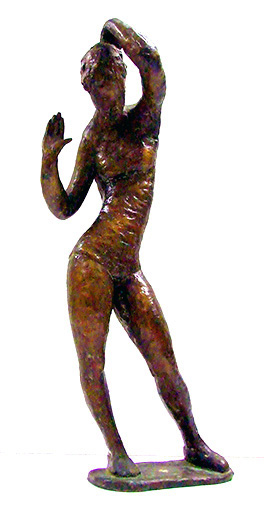
Guy
Boyd 1923-1988,
Dancer
In Repose
Bronze, 35 cm
high
Price: $9,950
ENQUIRE
Provenance:
Lenore Boyd
by descent from Guy Boyd (1923-1988)
|
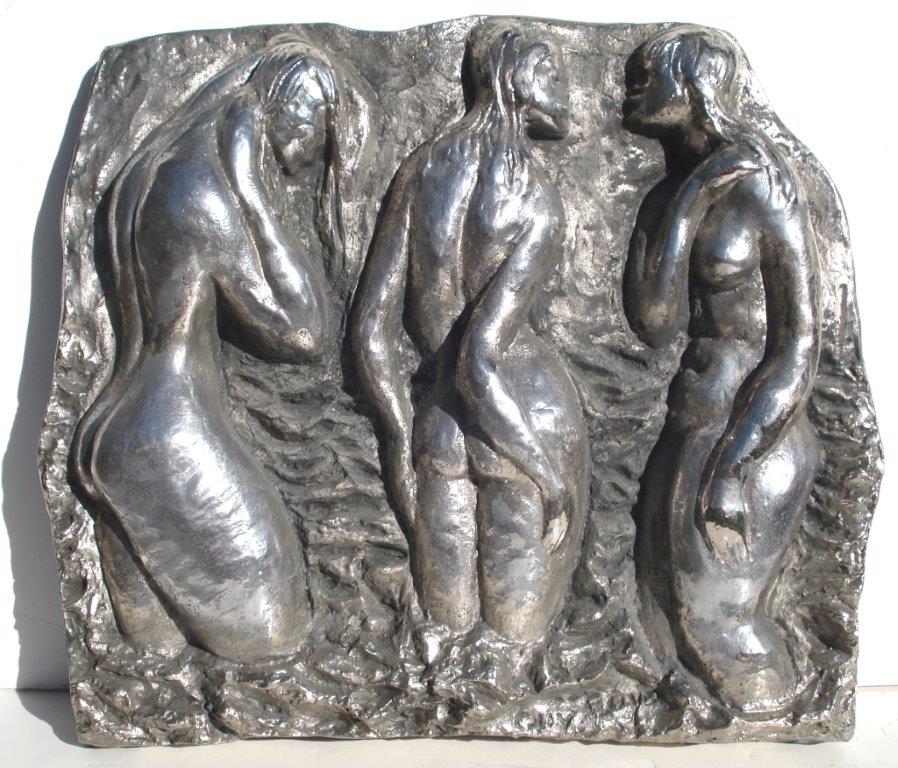
Guy Boyd 1923-1988,
Bathing Graces
Silver
patina on Bronze,
46 cm x 46 cm
Price:
$15,000 ENQUIRE
Provenance:
Lenore Boyd
by descent from Guy Boyd (1923-1988) |
|
|
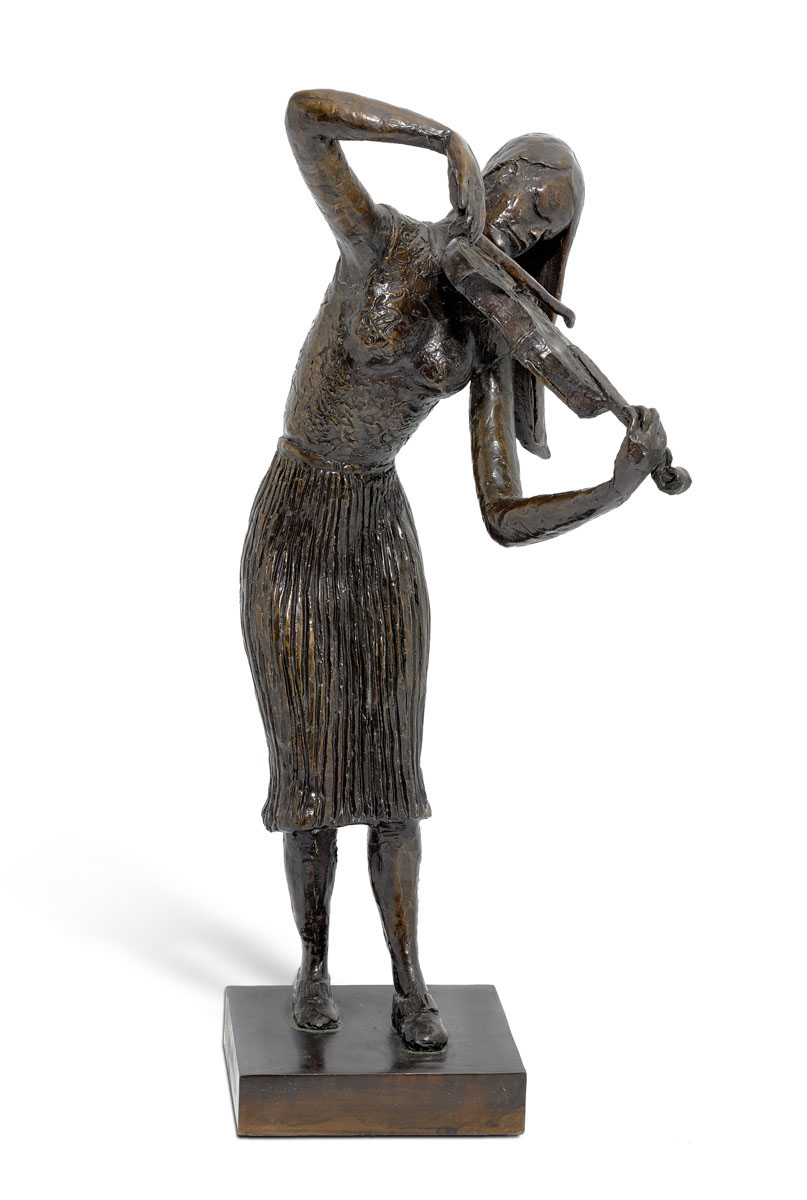 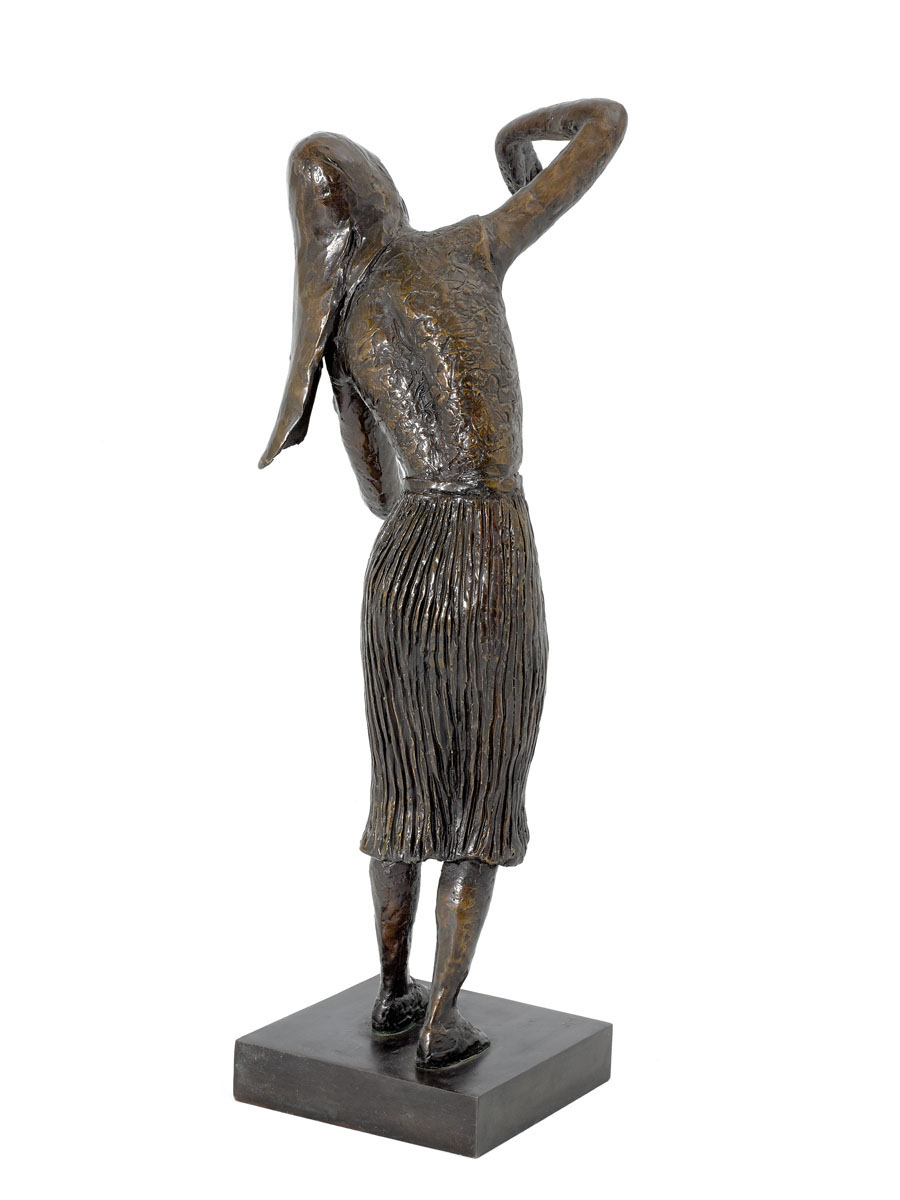
Guy Boyd 1923-1988,
Violinist
1979,
Bronze
4/12
signed 'Guy Boyd' 45.5 cm high
Price:
ENQUIRE
Exhibited :
1979
Shaw Gallery
107 Shaw
St, Toronto, ON M6J 2W4, Canada,
Shaw Center History;
1980
Randall Scott Gallery 111
Front Street #204 Brooklyn,
New York,
USA 11201
Provenance:
Private
Collection NSW,
1980
Randall Scott Gallery 111
Front Street #204 Brooklyn,
New York,
USA 11201
Mr Pranab Bagchi acquired on 5 April
1980 |
|
|
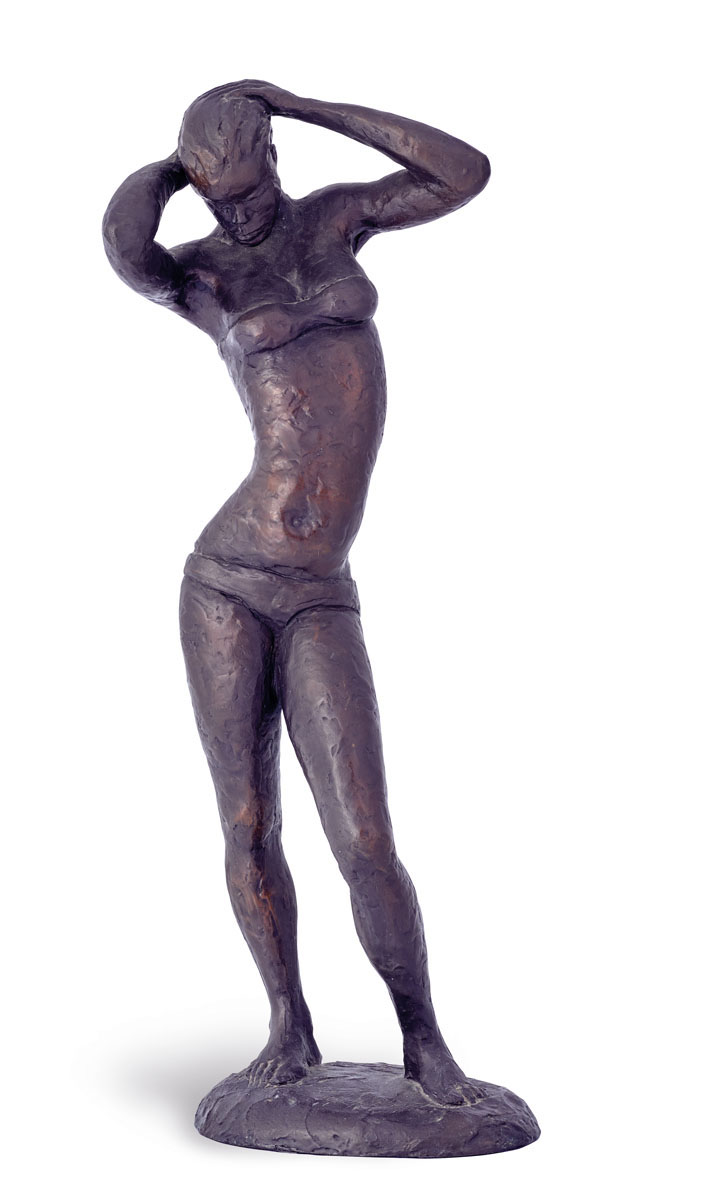 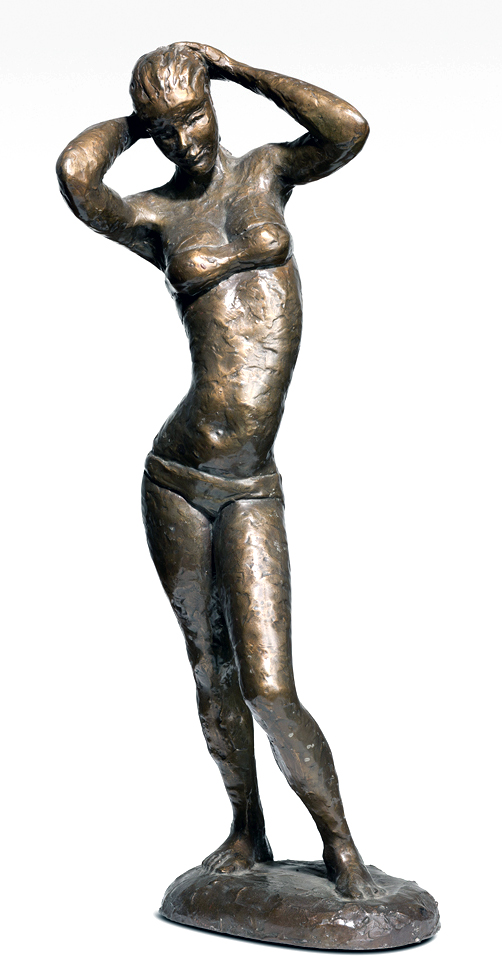
Guy Boyd 1923-1988,
Bikini Girl, Bronze
signed 'Guy Boyd'
52
cm high,
ed. 12
Price:
ENQUIRE
Exhibited:
1987
October
Guy Boyd: Sculpture in Bronze, David Ellis
Fine Art, Melbourne, 6-31 October 1987, Cat no. 17
illustrated
Provenance:
Private Collection NSW; David Ellis Fine Art Melbourne 1987
|
|
|
.jpg)
Guy
Boyd 1923-1988,
LOVERS
1981
Bronze
6/9,
signed 'Guy Boyd'
43 cm high x 43 cm wide
Price:
ENQUIRE
Exhibited:
1979
Shaw Gallery
107 Shaw
St, Toronto, Canada,
Shaw Center History;
1980;
Randall Scott Gallery 111
Front Street #204 Brooklyn,
New York,
USA 11201
Provenance:
Private Collection NSW;
The Estate of Barrie Dexter CBE,
the Australian High Commissioner
Barrie Dexter
Canada purchased from artist
while Guy Boyd was living in Toronto CA Canada -
Source documentation accompany
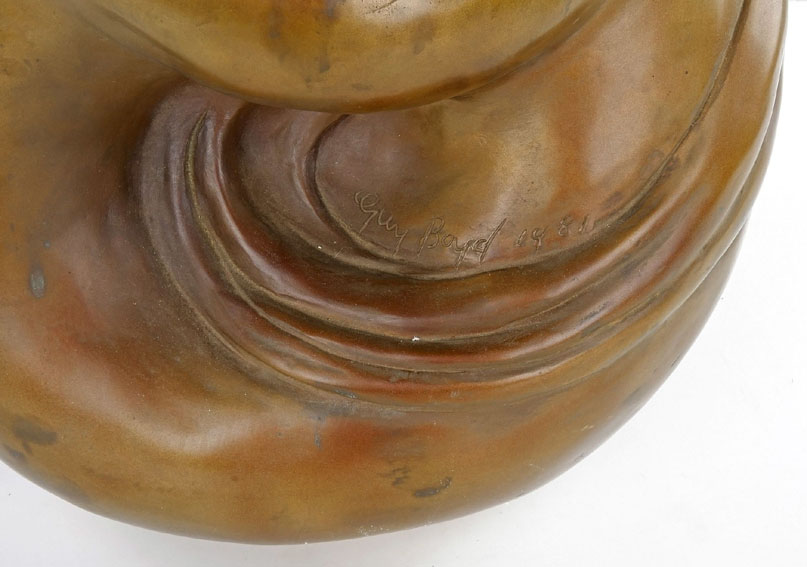 signed 'Guy Boyd' signed 'Guy Boyd'
|
|
|
|
|
|
Auction
Results
Under
freedom of information we compiled relevant facts for you to enjoy .
We believe in sharing the knowledge and express deep gratitude to the websites
below in particular, and also to all Australian National galleries, Australian
and International Press for information they share with us, without them our
research would not be available. We hope you will enjoy the free services.
Guy Martin à Beckett BOYD
1923-1988
|
Details |
Price excl. GST |
|
 |
Kneeling Nude 1984
Bronze, edition: 3/9, signed numbered: Guy Boyd 3/9,
83 cm height, Est: $20,000-30,000, Menzies, Important Australian &
International Art featuring Highlights From the ANZ Art Collection,
Sydney, 29/11/2023, Lot No. 105 |
$50,318 |
|
 |
Swimmer (1981)
Bronze, edition 5 of 9, signed inscribed 'Guy Boyd / 5/9' on base,
113 x 36 x 39 cm (including base), Est: $10,000-15,000, Sotheby's,
Important Australian & New Zealand Art (lots 1-98) | Important
Australian Art from The J.G.L. Collection (lots 99-137), Sydney,
16/05/2018, Lot No. 53 |
$43,920 |
|
 |
Ballet Dancer Practising 1984
Bronze, signed and dated 'Guy Boyd 84' on base,
85 x 86 x 25 cm, Est: $12,000-18,000, Sotheby's, Important Australian
Art, Sydney, 23/11/2016, Lot No. 96 |
$29,280 |
|
 |
Lovers Changing Into a Tree, C.1969
Bronze, signed at base: Guy Boyd, inscribed verso: Sculptors Cast,
76 cm high, Est: $5,000-7,000, Deutscher and Hackett, Important
Australian + International Fine Art, Sydney, 10/04/2019, Lot No. 94 |
$25,620 |
|
 |
Lovers Turning Into a Tree
Sculptured bronze (a fountain), incised 'Guy Boyd' numbered 4/6 (to
base),
76 cm high, Est: $12,000-16,000, Christies, Australian & International
Fine Art, Melbourne, 08/05/2001, Lot No. 129 |
$23,500 |
|
 |
Bather at a Waterfall, 1986
Bronze with gold patina, edition: 1/12
105.5 cm height, Est: $20,000-25,000, Deutscher and Hackett, Australian
& International Fine Art, Sydney, 29/11/2007, Lot No. 54 |
$22,800 |
|
 |
Fertility Dancer
Sculptured bronze, ed: 2/6, incised with signature 'Guy Boyd' on the
base,
92 x 29 x 35 cm, Est: $8,000-12,000, Christies, Australian and European
Paintings, Sculpture and Drawings, Part I, Melbourne, 27/08/1997, Lot
No. 99 |
$21,850 |
|
 |
Kneeling Nude
Sculptured bronze, incised 'Guy Boyd' and numbered '9/12' on right arm,
82 cm high, Est: $15,000-20,000, Christies, Australian & International
Art, Sydney, 17/08/1999, Lot No. 96 |
$21,850 |
|
 |
Dancer
Bronze, edition 9/12, signed and numbered in base Guy Boyd/ 9/12,
82 cm height, Est: $15,000-20,000, Lawson~Menzies (now trading as
Menzies), Quarterly Fine Art Auction, Sydney, 10/11/2011, Lot No. 36 |
$21,600 |
|
 |
Female Dancer
Bronze, signed 'Guy Boyd', to base. Also with foundry mark 'F. J.
Lemon',
height 79 cm, Est: $12,000-18,000, Davidson Auctions, Estate &
Collector, Sydney, 17/05/2014, Lot No. 230 |
$21,240 |
|
 |
Girl Looking Over Shoulder 1987
Bronze, edition: 5/12, signed, dated and numbered in base: Guy Boyd 1987
5/12,
125 x 46.5 x 30 cm, Est: $14,000-18,000, Deutscher~Menzies, Lowenstein
Sharp Collection of Contemporary Australian Art, Melbourne, 11/11/2002,
Lot No. 74 |
$21,150 |
|
 |
Swimmer with Arms Surrounding
Bronze edition 3/9,
113 cm high, Evans Hastings Valuers & Auctioneers, The Estate of Barrie
Dexter CBE (Art lots only), Online Do not use, 02/05/2019, Lot No. 36 |
$20,525 |
|
 |
Dancer 1987
Bronze, edition: 6/12,
85 x 95 x 25 cm, Est: $12,000-15,000, Deutscher~Menzies, Lowenstein
Sharp Collection of Contemporary Australian Art, Melbourne, 11/11/2002,
Lot No. 67 |
$19,975 |
|
 |
Kneeling Girl
Sculptured bronze, signed 'Guy Boyd' (to base),
64 cm high, Est: $10,000-15,000, Christies, Australian & International
Fine Art, Melbourne, 08/05/2001, Lot No. 83 |
$18,800 |
|
|
|
|
|
|
VIDEOS
Cameron O'Reilly,
Dep.
Chairman of the
Australia National Gallery
officially open
the
Best of Boyd
exhibition
showing work of
Guy Boyd,
Arthur
Boyd, David Boyd,
Jamie Boyd,
Lenore
Boyd,
Tessa Perceval
VIDEO:
ABC TV
Australian
National News
VIDEO
Jamie,
Arthur, Guy, David,
Lenore & Tessa
- Galeria Aniela
 Cameron O'Reilly National Gallery
of Australia
opened the exhibition
Cameron O'Reilly National Gallery
of Australia
opened the exhibition
VIDEO:
Best of Boyd family
show work of
Arthur, Guy, David, Jamie,
Lenore
Galeria Aniela

VIDEO
:
ABC TV Sunday Afternoon
in Galeria Aniela, Boyd family exhibition
Arthur Boyd,
David Boyd,
Guy Boyd,
Jamie Boyd, Lenore Boyd, Tessa Perceval
VIDEO
ABC
TV
Australian
National News,
Best of Boyd family
exhibition Arthur, Guy, David,
Jamie, Lenore Boyd filmed in Galeria Aniela
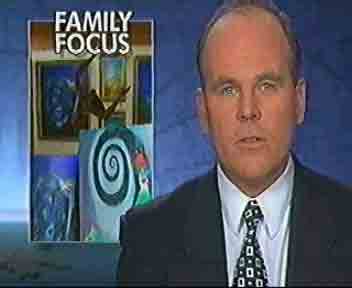
VIDEO gallery site:
ABC TV Sunday Afternoon, Arthur Boyd, Lenore Boyd, David Boyd exhibition
in Galeria Aniela
VIDEO:
ABC TV SUNDAY Afternoon,
Best of Boyd
family
exhibition
Arthur, Guy, David, Jamie and Lenore Boyd filmed in Galeria Aniela
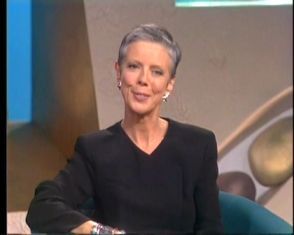
VIDEO filmed by Australian Television | the ABC TV Sunday
Afternoon
in Galeria Aniela
|
|
|
|
Guy Martin à Beckett Boyd
(12 June 1923 – 26 April 1988)
Biography
Australian
sculptor
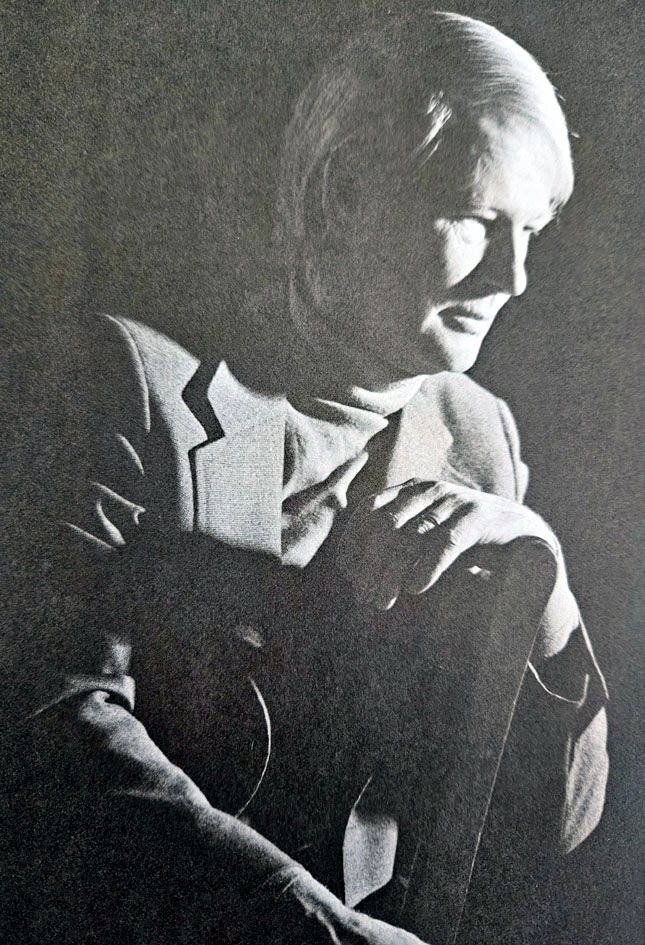
Guy Boyd
belongs to
the
distinguished
artistic
Boyd
dynasty that began
in 1886 with the marriage of Emma Minnie à Beckett
(1858-1936)
and Arthur Merric Boyd
(1862-1940).
Guy Boyd had 7 children including
Lenore Boyd.
Guy Martin à Beckett Boyd (1923-1988) was a renowned Australian
sculptor renowned for his ability to represent sensuality and fluidity in the
female forms.
Guy Boyd
career was in sculpture,
his
commissions include sculptures in Melbourne and Sydney's
international airports, Caulfield Town Hall, the Commonwealth Bank and has
pieces in the National
Gallery of Victoria,
Melbourne.
Art historian, art critic and curator Sasha
Grishin, called Guy Boyd "one of our most significant post-war
figurative sculptors". As crucial to the creative process, Guy Boyd worked
directly with his wax and clay process. Guy Boyd adhered to figuration, his
subjects are females, drawn from his family observations and his memory of
bodies in movement.
In 1965 Guy Boyd held his first solo show at Australian Galleries
in Melbourne followed by a number of important exhibitions of his work in
Australia, the United Kingdom, Canada, and the United States.
In 1965,
Bernard Smith
noted that "Stance and gesture are caught lyrically and sensuously" by Guy Boyd,
and he admired the way "oxidised surfaces, burnished along the ridges, achieve a
jewel-like beauty of texture".
In 1966,
James Gleeson,
writing in the
June Sun-Herald, Sydney
provides insight into Boyd's choice of sculptural medium during his transition
from the ceramic industry, his method of working, and its influence on the forms
he favoured
Elwyn Lynn had a mixed reaction to Guy Boyd's
early exhibition at Bonython's Hungry Horse Gallery in a review in The
Australian, June 4, 1966;
"Guy Boyd is best in the silvery, blackened, self-contained pieces when
the figure is preoccupied with some simple, inevitable gesture. Lapses are
profound: one gauche bronze dancing girl must be destined for a suburban garden
and a mother and child is embarrassing in execution and sentiment", but goes on
to admit "facile virtuosity is countered by breaking surfaces with light
catching impressionist touches [...] lissom yet awkward poses [...] delight in
their skill"
In 1968
Guy Boyd won a Churchill
Fellowship to
study art overseas. Boyd was recognised with a large format monograph, Guy
Boyd written by gallerist Anne Von Bertouch and art historian Patrick Hutchins
and published by Lansdowne Press.
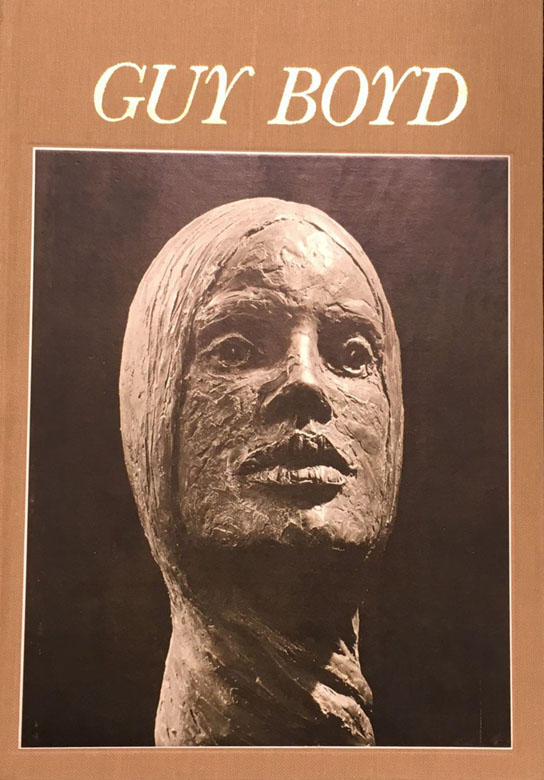
Later in 1968, Guy and Phyllis migrated to
Canada with their four younger children, settling in Toronto in 1976, they
returned to live in Australia five years later. Guy Boyd was appointed the Art Advisor
to Deakin
University in
1988.
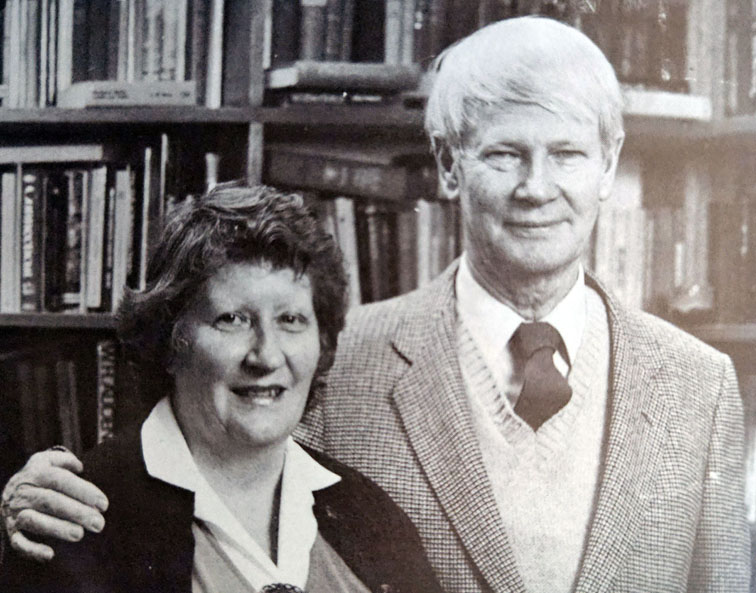
PHOTO: Guy Boyd and wife Phyllis Boyd
In 1979, Professor Patrick
Hutchings' discussion of the sculpture in the 1979 monograph attributes Boyd's
fascination with transformation and change to his inheritance of a Boyd "clan
style", "a family theme, one of metamorphosis", a motif evident in a 1948
two-handled pot by his father Merric, which Guy Boyd had kept.
In 1987, Reviewing one of Guy Boyd's last shows, at Beaver Galleries in
Canberra,
Sasha Grishin
writing in The
Canberra Times, contrasts the sculptor's Boyd family
inheritance of "figurative humanism" against the prevailing abstract sculpture
imitative of Anthony
Caro. Describing Guy Boyd as never having been a "fashionable
sculptor" he praises Boyd’s avoidance of "slick" realism and his concentration
on the human figure as a "vehicle for communicating ideas", his ability to
convey beauty without "sentimentalism" and to represent freedom in movement
through "an
exciting resolution of the arrangement of volumes within graceful floating
lines".
Guy Boyd Sculptor
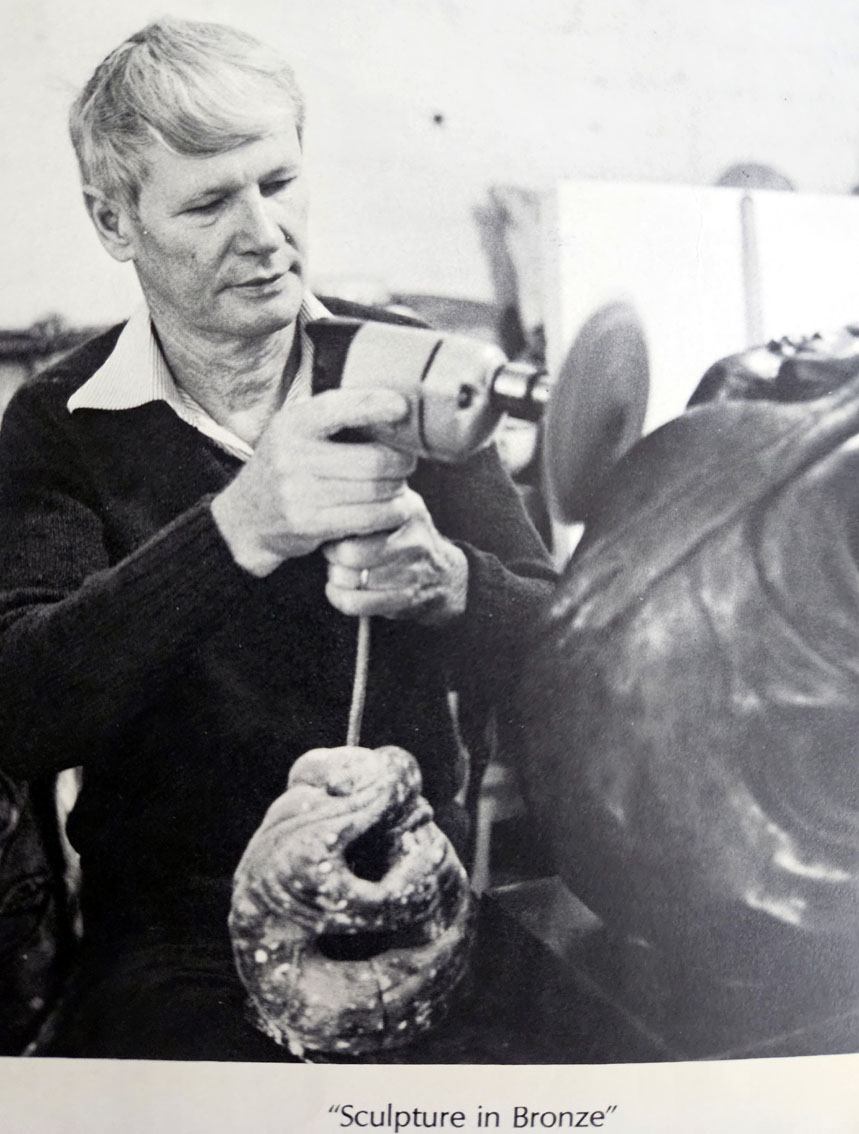
Guy Boyd turned to a full-time career in sculpture in 1965 when he held his
first solo show at Australian Galleries in Melbourne. His commissions include
sculptures in both Melbourne and Sydney's international airports, Caulfield
Town Hall,
the Commonwealth Bank, and has pieces in the National
Gallery of Victoria,
Melbourne.
Guy Boyd had exhibitions of his work in Australia, the United Kingdom, Canada,
and the United States. In 1968 Guy Boyd won a Churchill
Fellowship to
study art overseas. He was recognised with a large format monograph, Guy Boyd written
by gallerist Anne
Von Bertouch and
art historian Patrick Hutchins and published by Lansdowne Press. Later that year
Guy and Phyllis migrated to Canada with their four younger children, settling in
Toronto in 1976, but returned to live in Australia five years later.
Guy Boyd's early sculptures and reliefs were mostly in terracotta and plaster.
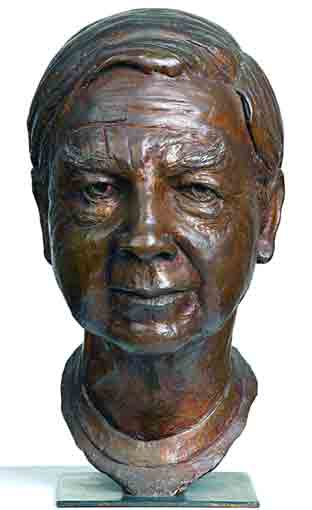
Guy Boyd
1923-1988,
Portrait of Arthur Boyd, Bronze,
Price:
SOLD
James Gleeson,
writing in the Sun-Herald, Sydney
in June 1966 provides insight into Boyd's choice of sculptural medium during his
transition from the ceramic industry, his method of working, and its influence
on the forms he favoured:
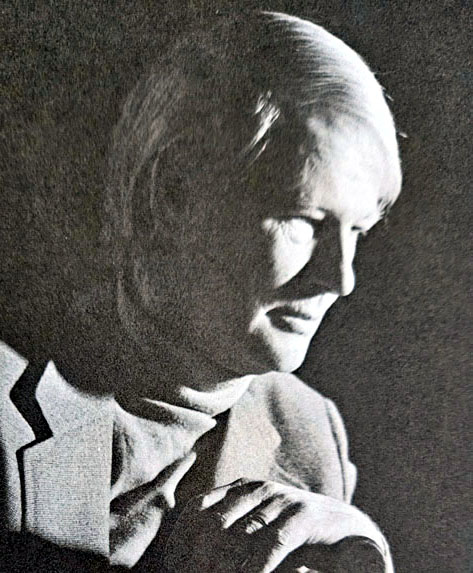 Guy
Boyd's technique is not merely original (for
that in itself is not necessarily a virtue), it is original and entirely at one
with the intention of the artist. He has perfected the ideal means for saying
what he wants to say, so the originality of his technique is also artistically
important. First stage in the transmutation of nature into art is a wax model.
This is the creative stage when the soft wax must be thumbed into a work of art
that is alive with the vibrancy of nature. The next stage is the plating of
the model with silver or copper, but the usual process would smooth away the
subtleties of surface modelling and destroy its vitality. So, the wax effigy
sits in its acid bath for weeks on end and a very low charge of electricity
gradually deposits a paper-thin layer of metal on its surface. The wax is
chemically dissolved, the shell is strengthened on the inside and finally filled
with a plastic stone that will neither expand nor contract to endanger the metal
skin. Guy
Boyd's technique is not merely original (for
that in itself is not necessarily a virtue), it is original and entirely at one
with the intention of the artist. He has perfected the ideal means for saying
what he wants to say, so the originality of his technique is also artistically
important. First stage in the transmutation of nature into art is a wax model.
This is the creative stage when the soft wax must be thumbed into a work of art
that is alive with the vibrancy of nature. The next stage is the plating of
the model with silver or copper, but the usual process would smooth away the
subtleties of surface modelling and destroy its vitality. So, the wax effigy
sits in its acid bath for weeks on end and a very low charge of electricity
gradually deposits a paper-thin layer of metal on its surface. The wax is
chemically dissolved, the shell is strengthened on the inside and finally filled
with a plastic stone that will neither expand nor contract to endanger the metal
skin.
Guy Boyd experimented with an electrolytic
deposition of
silver combined with a layer of copper, but abandoned that after finding that
applying heated carbon
tetrachloride to
dissolve the wax from the metal shell was affecting his health.
In 1966, Guy Boyd discontinued the electroplating with powdered granite compound
infill and the majority of Guy Boyd mature work is fine-face bronze casts using
the lost
wax process,
in which he innovated through the admixture of silicon with wax, with editions
of usually six produced in bronze and aluminum.
Often a thin finish in silver is applied over the bronze or aluminum cast,
oxidized to near-black then burnished lightly to reveal texture in relief; his
1971 Aboriginal Legend of Flight, commissioned for Sydney Kingsford
Smith International Airport arrivals
gate, after an earlier version (1969) for Tullamarine
Airport,
is an example.
It is five and a half meters in width, modeled in clay, cast in plaster and then
sand-cast in aluminum in 27 sections, coated in sterling silver over nickel and
copper layers, then oxidized before being bolted together and the joins
concealed. It is displayed against a black Swedish marble wall.
Of his working technique, art historian, art critic and curator Sasha
Grishin noted
that Boyd worked directly with his wax or clay, rather than through preparatory
drawings, accepting the modeling and subtraction of material, and revelation of
the unexpected, as crucial to the creative process.
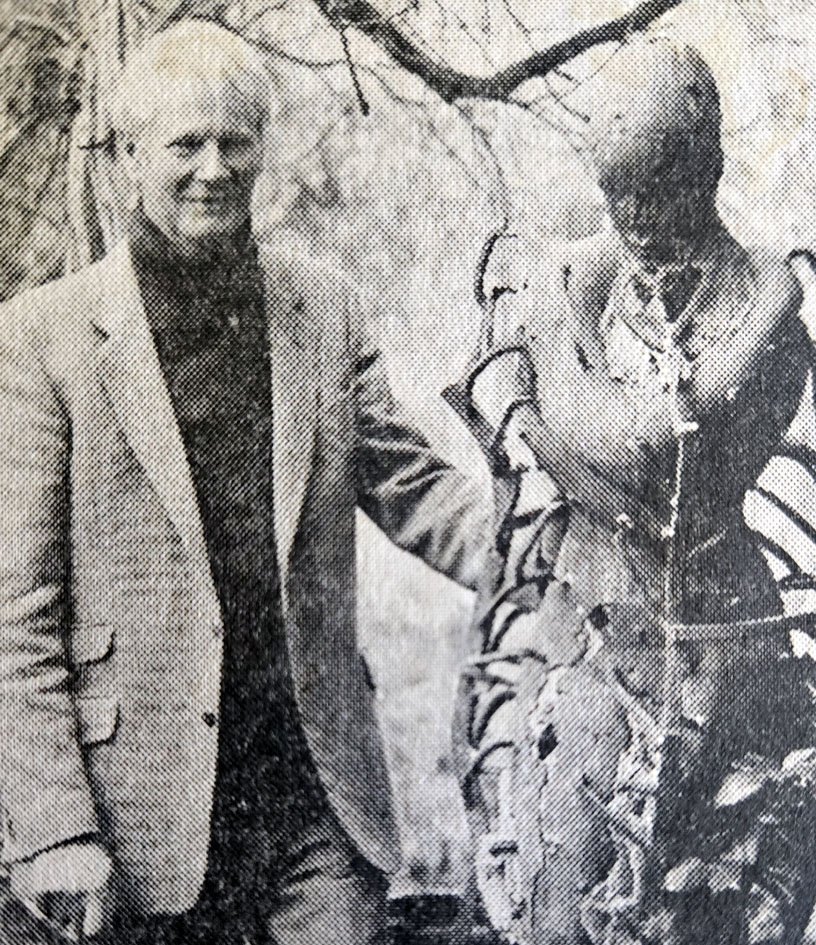
Guy Boyd activism
Guy Boyd was also active in environmental and other causes, including protesting
against the damming
of the Franklin River and
advocating the innocence
of Lindy Chamberlain.
A determined and natural leader, in 1967 Guy Boyd
founded and was President of the Brighton Foreshore Protection Committee.
Guy Boyd was vocal in condemning inappropriate
development and council corruption in the suburb, where he had settled after
purchasing and restoring a house that was once his grandparents', and advocated
for councillors to be paid in order to attract candidates less compromised than
those who were real estate agents and property developers.
Goy Boyd campaigns resulted in the defeat of a proposal to build a marina at
Brighton[ and
the halting of a high-pressure oil pipeline that was to be extended by Esso and BHP under Port
Phillip Bay. A
plaque commemorating his achievements in preservation and conservation was later
erected on the beach at Brighton.
After Guy Boyd, Phyllis Boyd and daughters Lenore and Sally, were
early involved in calls for a judicial inquiry into Lindy Chamberlain's trial
which resulted in a charge of the murder of her baby daughter, they were active
in drawing up a petition entitled 'A Plea for Mercy'.
Guy Boyd became the Australian Coordinator of the effort and, in
1984, edited the book Justice in Jeopardy in Chamberlain's defense.
In 1983, as a member of the Tasmanian Wilderness Society, Guy
Boyd lobbied against the Tasmanian State Government's plan to dam the Franklin
River.
In 1988, Guy Boyd was appointed the Art Advisor to Deakin
University.
Guy Boyd young Life
Guy Boyd was born in
Murrumbeena Victoria,
he was a member of the famous
Boyd artistic dynasty,
and the brother of painters
Arthur Boyd
and
David Boyd.
Born in Murrumbeena,
Victoria, Guy was the third child of William
Merric Boyd,
potter, and his wife Doris Lucy Eleanor Bloomfield, née Gough, a painter, and
thus was a member of the Boyd
artist dynasty.
Brother of Arthur and David,
both painters, Lucy a potter, and Mary,
a painter (who married first John
Perceval,
and then later Sidney
Nolan,
both artists), he grew up in his father's pottery.
The Boyd family artistic
dynasty includes painters, sculptors, architects,
writers and other arts professionals, and descends from Boyd's grandfather Arthur
Merric Boyd,
Boyd's father Merric and
mother Doris,
uncles Penleigh
Boyd and Martin
Boyd.
After the privations of
the Great
Depression followed
by a disastrous fire at his father's pottery, where he was assistant, in 1937
Boyd found work first as a jeweller's apprentice, then in a number of jobs,
including at a nuts and bolts factory and as a builder's labourer.
In 1941-46 Guy Boyd
served in the Australian
Army Reserve,
however as a committed pacifist Guy Boyd was deployed as a draughtsman in
Melbourne and then at Fortuna
mansion in Bendigo,
before conflicts with his superiors resulted in his being posted interstate in
1944 to the 103rd Convalescent Depot, Ingleburn,
where Boyd volunteered to teach pottery to the patients. Examples of the injured
combatants' work were exhibited in Sydney in 1945.
Guy Martin à Beckett Boyd Death
(12 June 1923 – 26 April 1988)
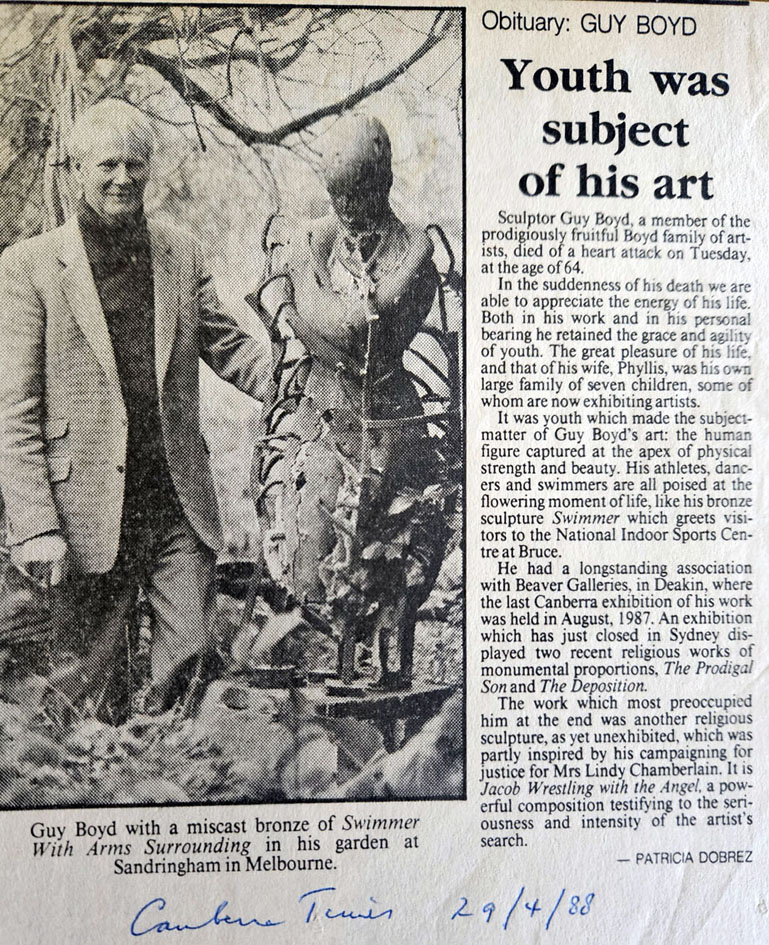
Guy
Martin à Beckett Boyd (1923-1988), sculptor and potter, was born on 12 June 1923
at Murrumbeena, Melbourne, third child of William
Merric Boyd, potter, and his wife Doris Lucy Eleanor Bloomfield, née Gough,
a painter.
Grandson of the painters Arthur Merric and Emma Minnie Boyd, nephew of the
novelist Martin
Boyd, cousin of the architect Robin
Boyd, and brother of the painters and potters Arthur and David Boyd, Guy
never doubted his vocation as an artist.
He
chose sculpture, he said, because in painting he could not compete with Arthur,
the brother he always revered. The à Beckett family fortunes, on which his
father depended, dwindled to nothing in the Depression years. Guy and his
brothers, for whom a Murrumbeena state primary school education had to suffice,
took labouring jobs.
In
1941-46 he served in the Militia. A committed pacifist, he refused to bear arms
and worked at first as a draughtsman. Conflicts with his superiors were resolved
when he was posted in 1944 to the 103rd Convalescent Depot, Ingleburn, New South
Wales, to teach pottery to the patients.
Taking
up a Commonwealth Reconstruction Training Scheme grant, Boyd enrolled in 1945 at
the East Sydney Technical College, where he studied sculpture under Lyndon
Dadswell. In 1946 at Neutral Bay he founded a commercial pottery which,
confusingly, he called the Martin Boyd Pottery. With moderate prices, functional
designs and Australian decorative motifs, his products were popular with postwar
homemakers.
On 22
April 1950 at St John’s Church of England, Darlinghurst, Boyd married
18-year-old Barbara Dawn Cooper, a secretary; they separated within a year.
Divorced in 1952 and having sold his Sydney business, he moved back to Melbourne
and on 1 December at the office of the government statist, married Phyllis Nairn,
an Adelaide-born graduate in social work.
He
moved into a disused pottery at his father’s property in Murrumbeena. After
twenty months of communal living with his parents, and with Arthur and his
sister Mary Perceval and their families, Guy bought his first home, at nearby
Oakleigh.
While
his second commercial venture, the Guy Boyd Pottery, flourished, with Phyllis as
an active business partner, Guy began to sculpt part time.
In
1964 he was confident enough to sell the pottery, move to Brighton, and start
his career in sculpture.
At a
time when abstract sculpture prevailed, he was committed to figurative art, but
he soon won high praise for his finely textured work in bronze and in aluminium
overlaid with silver, and for the strength and delicacy of his female nudes.
Guy Boyd
first big commissions included wall sculptures for Tullamarine (1970) and Sydney
(1971) airports.
Study in Europe and Asia, on a Churchill fellowship in 1969,
persuaded Boyd to test his work internationally. In 1976 he moved to Toronto,
Canada; his wife and their youngest four children accompanied him. With access
to the big galleries of Chicago and New York, his sculpture flourished.
It was
a bonus that `being a Boyd’ was not an issue, as it was in Australia. However,
it was family feeling that brought him home. On a visit in 1980 he could not
resist buying his grandfather’s house in Edward Street, Sandringham, because it
held happy memories of childhood.
The
Boyds returned to Melbourne in 1981 to restore the house and live in it.
Continuing his career as a sculptor, with major works that expressed his
Christian faith, Guy had also become a public figure who did not shirk
controversy.
A
former president (1973-76) of the Port Phillip Bay Conservation Council, he
remained active in environmental matters: he was arrested in 1983 while
protesting against the damming of the Franklin River in Tasmania.
With
his wife and elder daughters he campaigned tirelessly to reverse Lindy
Chamberlain’s conviction for murdering her baby daughter, Azaria,
at Ayers Rock (Uluru).
Conservative in his views on religion and family life, but ready to defy the law
for his pacifist beliefs; ambitious to make his name in art, but selflessly
dedicated to causes that depleted his energies, Boyd was a man of great charm,
good looks and gentleness, with an inflexible will.
In his
remarkable family, he was never just `another Boyd’. He died on 26 April 1988
from coronary artherosclerosis and was buried with Anglican rites in Brighton
cemetery.
His
wife, and their five daughters and two sons, survived him. Guy Boyd had held
one-man exhibitions in all Australian capital cities and in London, Montreal,
Chicago and New York. His work is represented in the National Gallery of
Australia and in the State galleries of Victoria, New South Wales and
Queensland.
Guy Boyd was a potter and figurative sculptor noted for his
ability to capture the fluidity and sensuality of the female
form. He was also active in environmental and other causes,
including the damming of Tasmania's
Franklin River
and the
Lindy Chamberlain
affair.
Initially Guy Boyd was a potter, establishing both Martin Boyd
Pottery and later Guy Boyd Pottery. These studios produced a
wide range of modernist objects from house-wares to decorative
pieces which enjoyed strong commercial success. Iconic
Australian imagery, particularly flora and indigenous motifs,
feature heavily. This period of work is also stepped in the
'atomic age' aesthetics of the 1950s and early 1960s with a
familiar color palate and shapes that hold strong Echoes of
Eames and others.
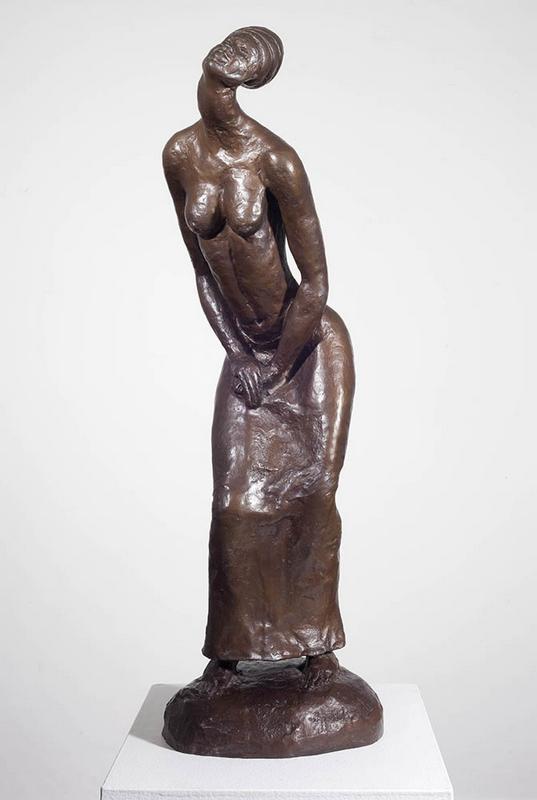
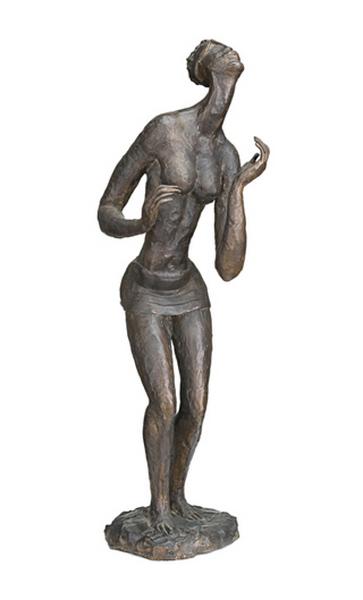
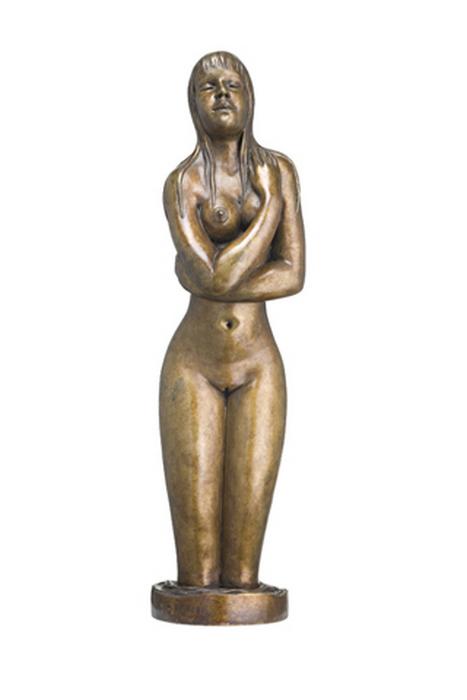
Guy Boyd (sculptor) visit Wikipedia, the
free encyclopaedia
exhibitions
Major
Exhibitions
·
1965: Australian Galleries, Melbourne
·
1965: Bonython Art Gallery, Adelaide
·
1966: Bonython's Hungry Horse Art Gallery, Sydney
·
1967: Australian Galleries, Melbourne
·
1967: The Johnstone Gallery, Brisbane
·
1968: Bonython Art Gallery, Adelaide
·
1968: Von
Bertouch Galleries,
Newcastle
·
1969: The Johnstone Gallery, Brisbane
·
1970: The Leicester Galleries, London
·
1970: Bonython Art Gallery, Sydney
·
1971: Andrew Ivanyi Galleries, Melbourne
·
1971: Von Bertouch Galleries, Newcastle
·
1971: Skinner Galleries, Perth
·
1972: Bonython Art Gallery, Adelaide
·
1972: The Johnstone Gallery, Brisbane
·
1973: Manyung Galleries, Victoria
·
1973: Von Bcrtouch Galleries, Newcastle
·
1973: Skinner Galleries, Perth
·
1974: Andrew Ivanyi Galleries, Melbourne
·
1974: Phillip Bacon Galleries, Brisbane
·
1975: Greenhill Galleries, Adelaide
·
1975: Andrew Ivanyi Galleries, Melbourne
·
1976: von Bertouch Galleries, Newcastle
·
1976: Philip Bacon Galleries, Brisbane
·
1976: Dominion Gallery, Montreal
·
1977: The Randall Gallery, New York
·
1978: Philip Bacon Galleries, Brisbane
·
1978: Retrospective: The Australian Embassy, Washington DC
·
1979: Shaw Gallery, Toronto
·
1980: The Randall Gallery, New York
·
1980: Philip Bacon Galleries, Brisbane
·
1981: von Bertouch Galleries, Newcastle
·
1981: Holdsworth Galleries, Sydney
·
1982: Philip Bacon Galleries, Brisbane
·
1983: von Bertouch Galleries, Newcastle
·
1983: Holdsworth Galleries, Sydney
·
1984: Greenhill Galleries, Perth
·
1984: Niagara Galleries, Melbourne
·
1984: Philip Bacon Galleries, Brisbane
·
1985: von Bertouch Galleries, Newcastle
·
1985: Holdsworth Galleries, Sydney
·
1985: Golden Age (David Ellis) Gallery, Ballarat
·
1986: Clarkson University, New York
·
1987: Philip Bacon Galleries, Brisbane
·
1987: David Ellis Fine Art, Melbourne
·
1987: Beaver Galleries, Deakin, Canberra
·
1988: Holdsworth Galleries, Sydney
·
1988: Greenhill Galleries, Perth
Posthumous solo
·
1989: von Bertouch Galleries, Newcastle
·
1990: Philip Bacon Galleries, Brisbane
From 1945, Guy Boyd exhibited in group shows all Australian State capitals, with
representation as recently as 2012, and overseas, including Leicester
Galleries,
London in 1957, and at galleries in New York, San Francisco and Montreal.
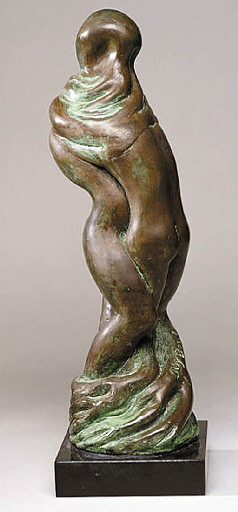
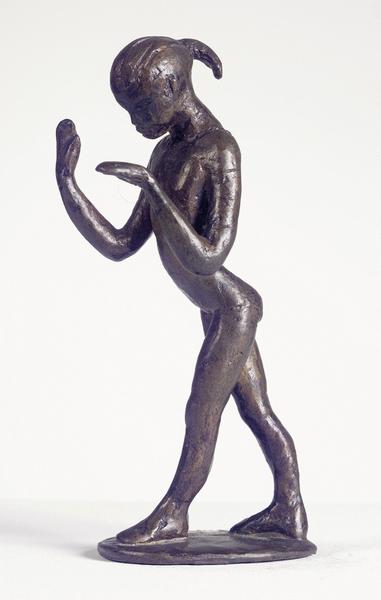
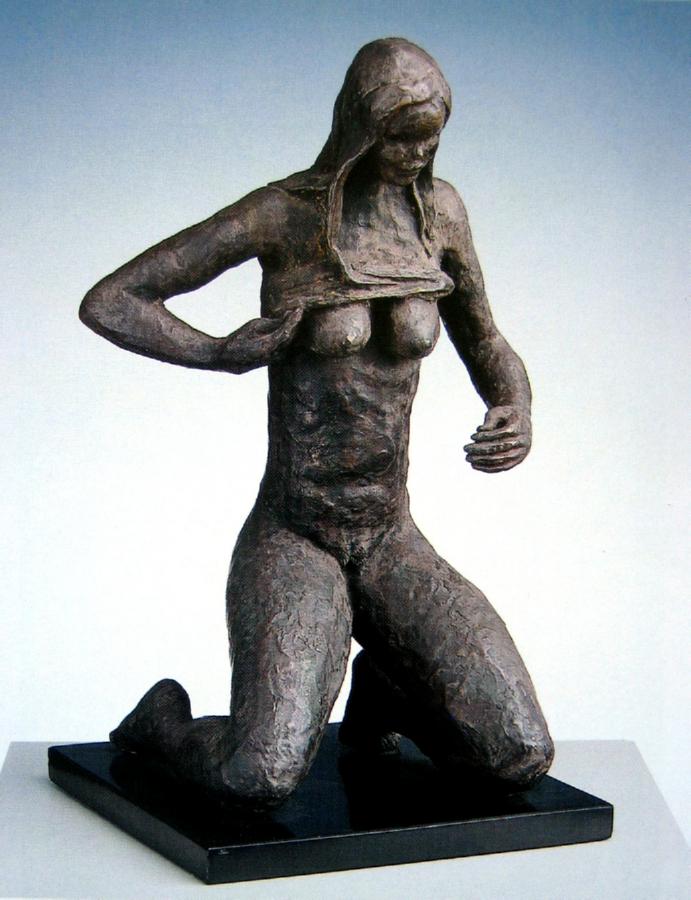
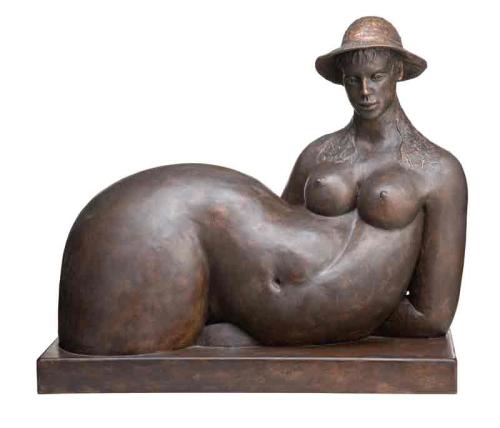
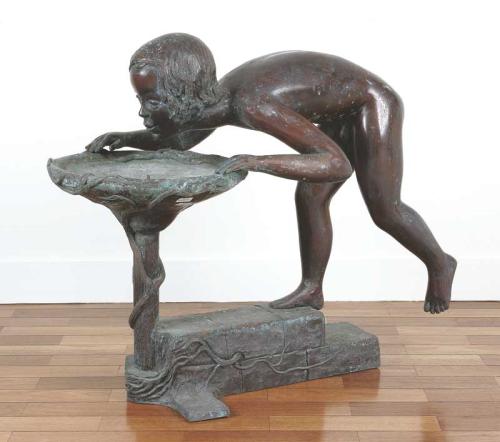
Collections
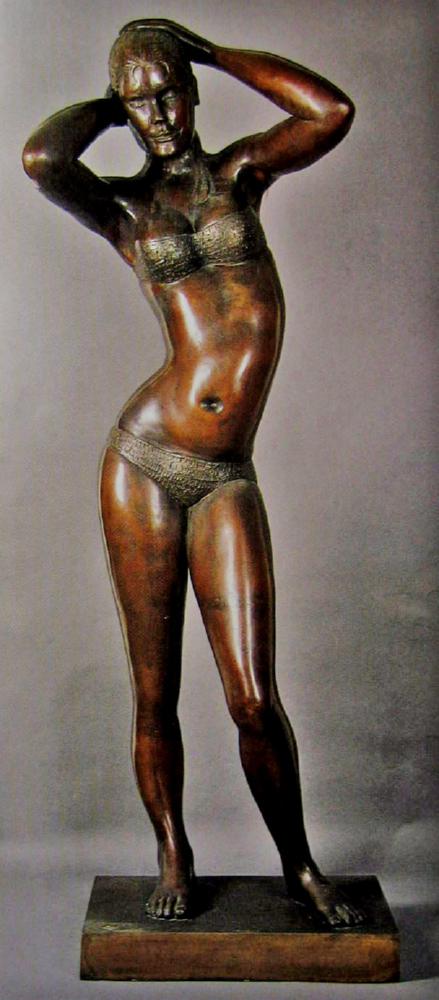
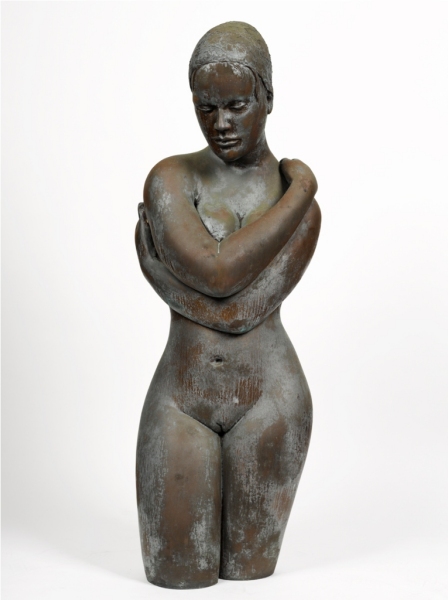

Collections and Commissions
·
Australian National Gallery,
Canberra
·
National Gallery of Victoria,
Melbourne
·
Art Gallery of New South Wales,
Sydney
·
Australian National University
·
University of Melbourne,
Melbourne
·
University of Newcastle,
Newcastle
·
University of Wollongong
·
McClelland Sculpture Park and Gallery,
Melbourne
·
Colac Otway Sculpture Park
·
Churchill House, Canberra
·
International Airport, Melbourne
·
International Airport, Sydney
·
Prudential Art Museum, Toronto
·
Art Gallery of Ballarat
·
La Trobe University,
Melbourne
·
Monash University,
Melbourne
·
Australian Institute of Sport,
Canberra
·
Newcastle Art Gallery
·
Museum and Art Gallery of the Northern Territory,
Darwin
·
Deakin University
·
Australian Catholic University
·
Clarkson University,
New York
·
Shepparton Art Museum
The bronze Lovers given to Melbourne
University by
Boyd and housed in the fourth floor bridge in the John
Medley Building,
was stolen and never been recovered. Boyd provided a replacement, a bather
figure for the east garden of University House.
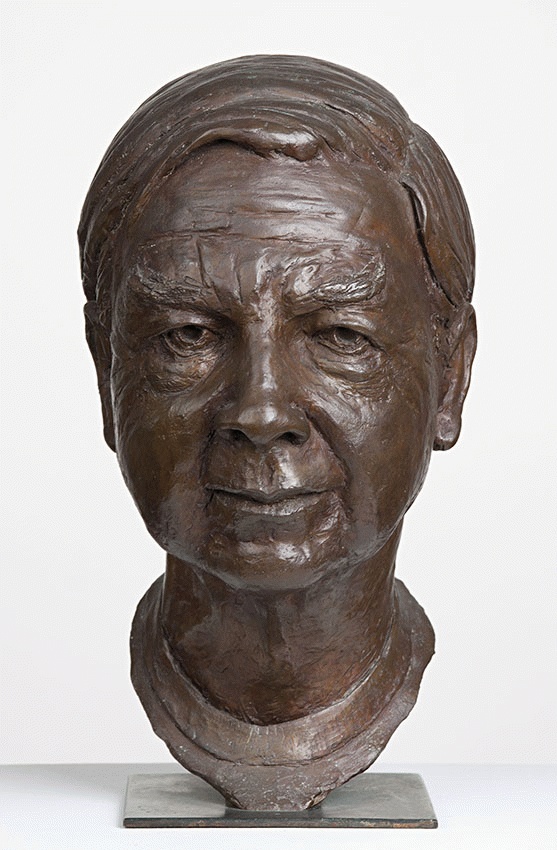
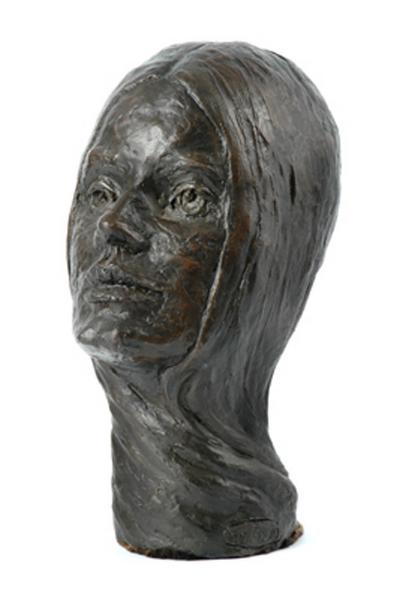
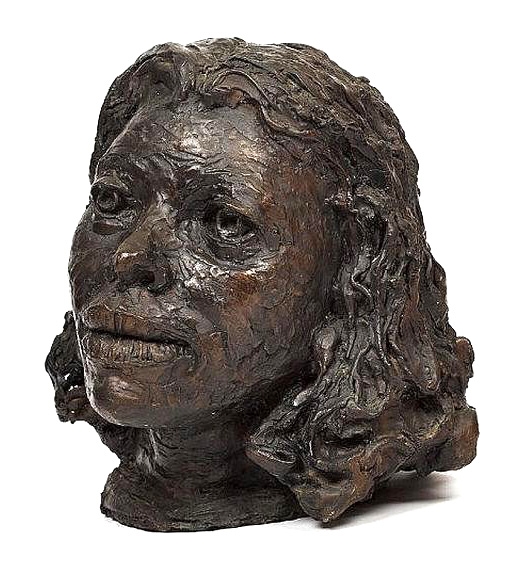
·
Niall, Brenda (2002) The
Boyds. Melbourne University Press. ISBN 0-522-84871-0.
·
Von Bertouch, Anne; Hutchings, Patrick; Boyd, Guy Martin a'Beckett, 1923-
(1976), Guy Boyd, Melbourne Lansdowne Press, ISBN 978-0-7018-0079-6
·
Scarlett, Ken (1980), Australian
Sculptors,
Nelson
·
Barbara A Rothermel (1989) The life and works of Australian sculptor Guy Boyd,
1923-1988, Thesis, M.L.S. University of Oklahoma 1989.
·
Boyd, Guy, ed. (1984). Justice
in jeopardy: twelve witnesses speak out.
Cheltenham, Vic.: Guy Boyd: distributed by Kingfisher Books. p. 207. ISBN 0-9591142-0-3.
RETURN TOP |
|
|
|
silver patina
on Bronze
Silver Patina applied
on bronze sculpture is expensive.
Unlike
conventional patinas,
silver
patina
is costly
and requires special protective wear (in addition to eye and face
protection, long sleeves and particular gloves) as the hot patina
actively splatters and permanently damage and discolours skin and
fingernails.
Nitrate
toxicosis in humans can occur through
enterohepatic
metabolism
of nitrate to
ammonia,
with nitrite being an intermediate.
All patinas
are formed by chemical reactions on the surface of metals.
Sculptural patinas are made by mixing chemicals and applying them
to the surface by brushing chemical solutions onto the surface
of Bronze while heating that surface with an oxyacetylene torch.
Others patinas are formed over several days by burying the piece in wood chips
soaked with other patina chemicals. Often, the final patina is a result
of two or more different patinas layered one over another.
Nitrites
oxidize
the
iron
atoms in
hemoglobin
from
ferrous
iron (2+) to
ferric
iron (3+), rendering it unable to carry oxygen. This process can lead to
generalized
lack of oxygen
in organ tissue and a dangerous condition called
methemoglobinemia.Humans are
vulnerable to methemoglobinemia due to nitrate
metabolizing
triglycerides
present at higher concentrations than at other stages of development.
Some can be more susceptible to the effects of nitrate than others.
The
Nitrate
ion is a
polyatomic
ion
with the
molecular formula
NO−3 and a
molecular mass
of 62.0049 g/mol. It is the
conjugate base
of
nitric acid,
consisting of one central
nitrogen
atom
surrounded by three identical oxygen atoms in a
trigonal planar
arrangement. The
nitrate ion carries a
formal charge
of negative one, where each oxygen carries a −2⁄3 charge whereas the
nitrogen carries a +1 charge, and is commonly used as an example of
resonance.
The
Silver
patina is a ‘solution of
silver
nitrate’
applied to Bronze using the ‘torch technique’, care must be taken
subsequently to bring up the desired effect.
Flakes of silver
nitrate
and stir to dissolve then apply while heating the metal till steams off
as the patina is brushed on.
Patterns can be made with brushstrokes.
Silver patina
colour variation (from dark gunmetal depths to brighter silvers) is not
entirely controllable and requires specialised knowledge as well as the
extensive expertise.
The grey and white effects of silver can be rinse off, wearing rubber
gloves (to keep the residue off hands) when the surface is first cooled.
Once it is rinsed and completely dry, it can be waxed. Once the wax is
dry, the surface can be buffed to produce a shiny silver or silver-grey
colour, sometimes dramatically different from the un-buffed look.
When the patina dries
it is mostly a dull, variegated grey-white, with hits of green and
occasional shiny silver flecks.
The
loose white can be gently rinse away, then wax is applied to the
surface, finally (when the wax is well hardened) the sculpture can be
buff it on a soft brass brush wheel to bring up a cloudy mottled
silver-grey with a medium-high gloss.
Much of the white is powdery, however,
and must be fixed with a spray fixative if the matte grey-white effect
is to be kept; otherwise, the white powder will smudge with the
application of the protective ‘wax coating’.
When the matte effect is preserved then the patina is
called
Grey.
If a
thin foil of silver is applied onto the object then the electro-plating
process is used to apply a thin layer of gold to a metal surface.
A method of coating a metal object with
silver by passing an electric current from a block of pure silver to the
article to be plated through a solution of cyanide and silver salts.
Electro-plated Nickel Silver, with a nickel based alloy being the base
metal to be plated.
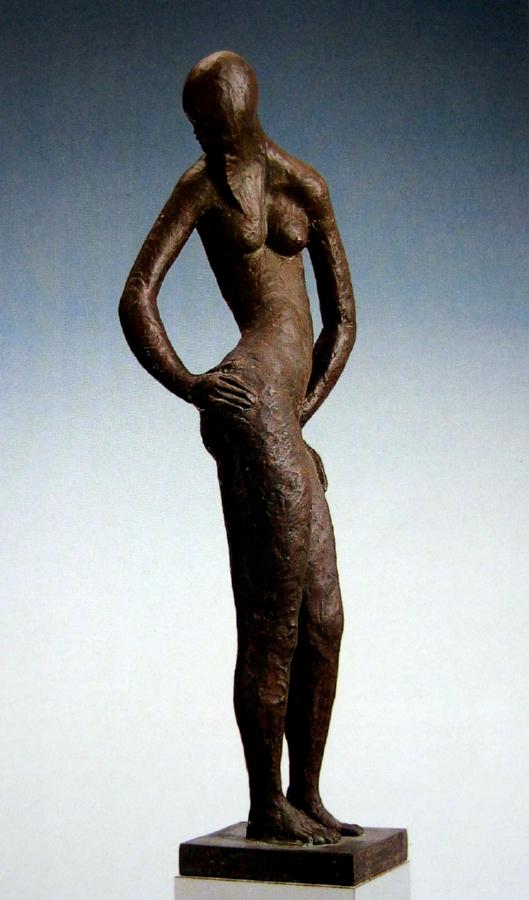 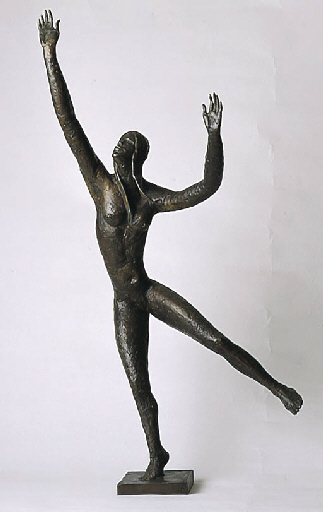 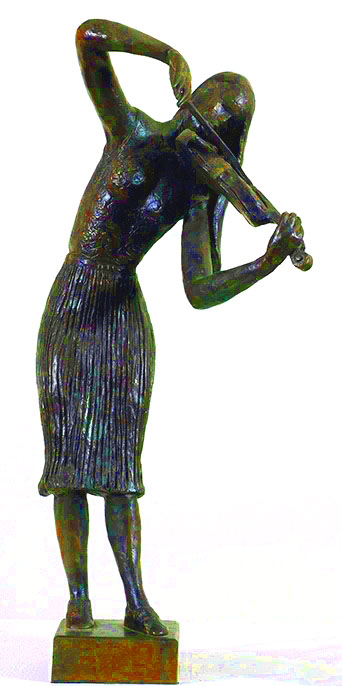 .jpg)
|
|
|

Galeria Aniela
Fine Art
provides an
independent
professional
consulting
and brokerage service
that others are unable to match,
representing
clients best interest in the
art market
from the point of the
quality,
investment
value
and
provenance.
Founded in 1994, Galeria Aniela Fine Art Gallery
and
Sculpture Park
has built
a strong standing in
Australia and overseas,
exhibiting world-class artists
and hosting
international
celebrities including
Sir David Attenborough, Cameron
O’Reilly
and Robert
James (Bob)
Hawke the Prime Minister
of
Australia. .
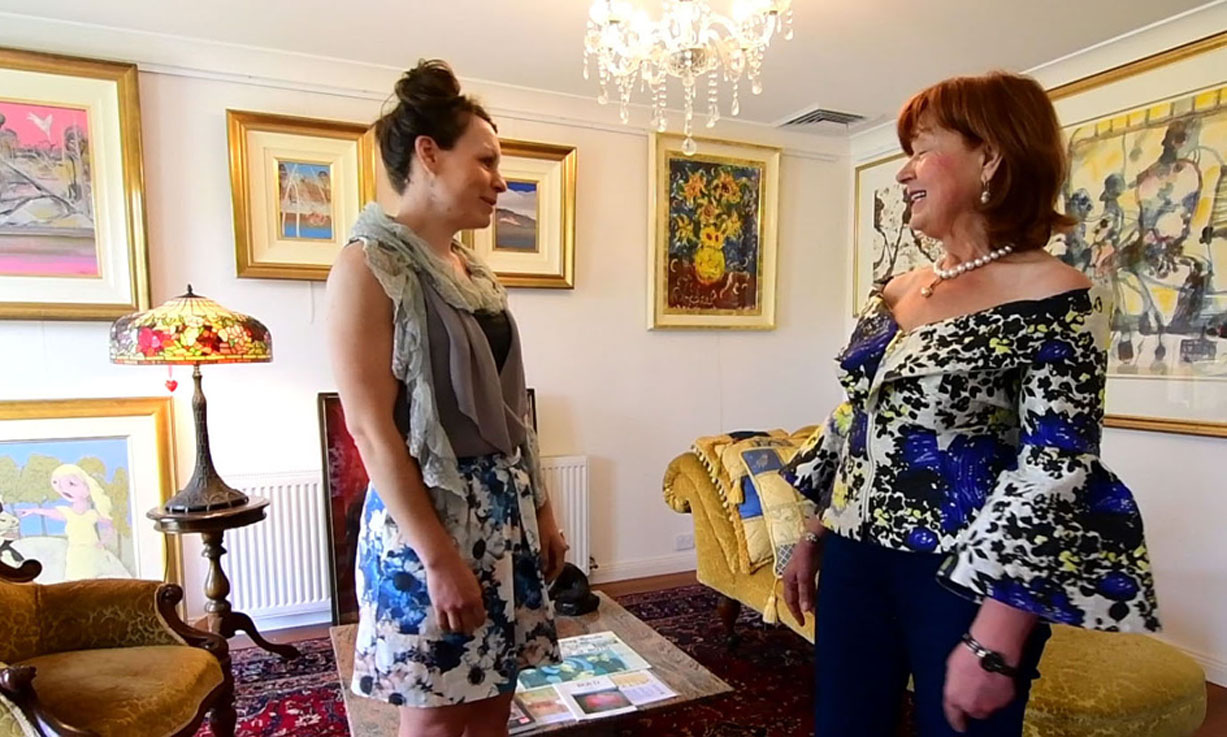
video Galeria Aniela Fine Art consulting and brokerage service
Combining a wide network of resources and
expertise in the
Australian
art and
Global
art market, we assist
our clients in all aspects of dealings in
fine art,
helping save time and money.
Whether you are a first-time buyer, an astute investor
or enthusiastic collector, our people focused approach
ensures an enjoyable and rewarding experience.
We welcome the opportunity to speak with you,
feel free to
contact
us
to discuss the ways in which Galeria Aniela can assist you
now and in the future.
Testimonials
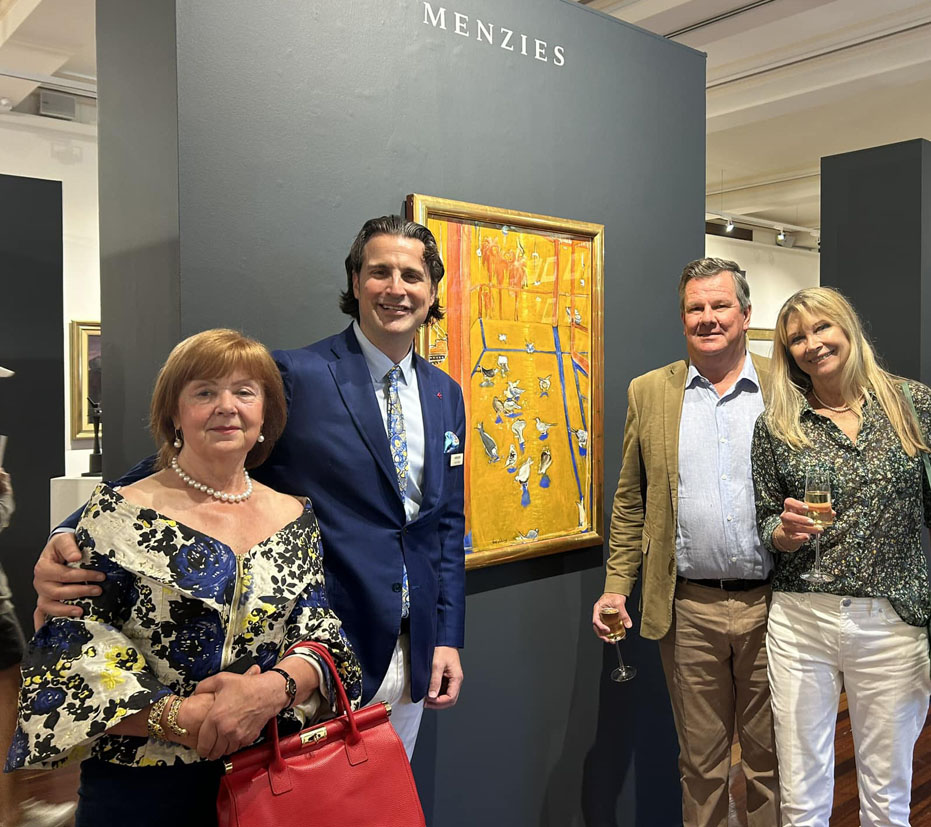
Photo
26 November 2023: (LEFT) Aniela and Cameron Menzies
at Menzies in Sydney
At Galeria Aniela, Fine Art
refers to
high-quality
works by
renowned
artists.
If you consider selling work of
Arthur Boyd,
Brett Whiteley,
Fred Williams,
Jeffrey Smart,
Arthur Streeton,
John Perceval, Charles Blackman,
Garry Shead,
Guy Boyd
or other significant work of fine art, please
contact us.
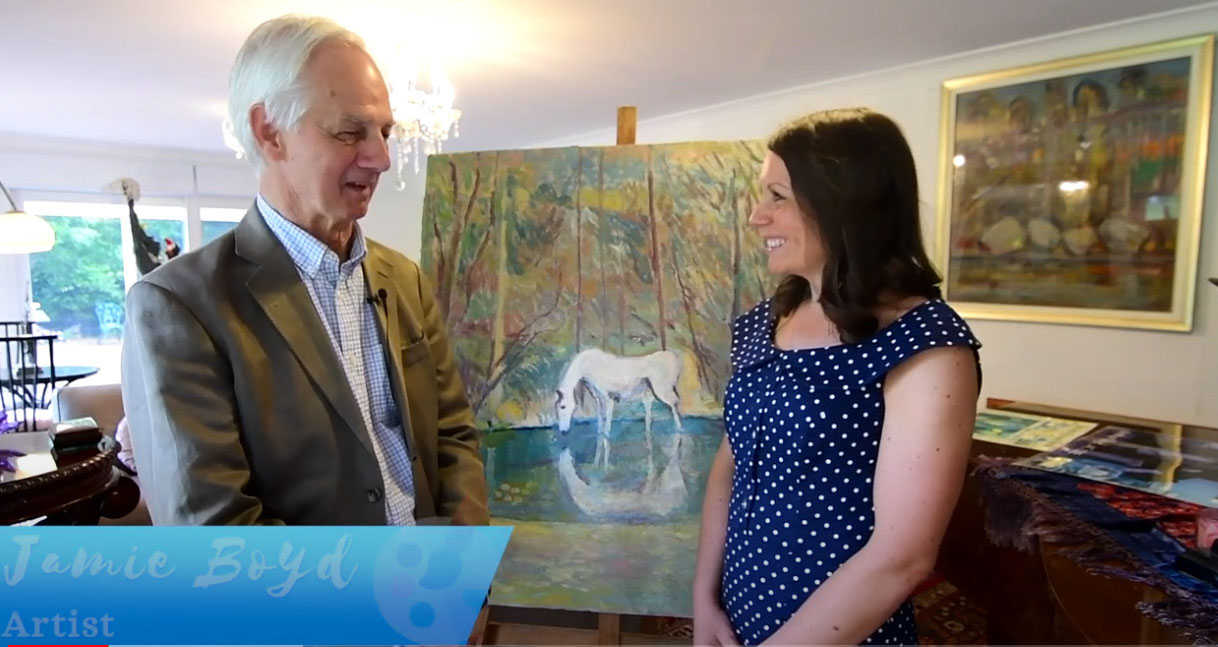
Video Jamie Boyd, the Boyd family most important LIVING
artist
The
BOYD family
exhibition
in Galeria Aniela coup the
front page
Sydney Morning Herald,
Australian National NEWS ABC TV
and
Sunday Afternoon ABC TV.
John Perceval Retrospective won
the Australian
National NEWS ABC TV and
Charles Blackman Retrospective conquer
Australian
Art Scream
SBS TV.
Works of art live for generations, constantly reborn in the minds of the
beholders to bring new meanings, new dreams, new ways of seeing and experiencing
the world. Be part of this magic world of amazing fine art from the ocean of
tranquillity to
concur
the heart, mind and soul.
The vision of Galeria Aniela is to increase the awareness of Australian
artists
cultural contribution. With passion for art, hard work and dedication, we strive
for high ideals to create a better future for the arts.
When
you purchase Art from Galeria Aniela,
you make a valuable contribution to our mission of helping artists to make a
living with their creations and together we make a difference.
|
|
|
|
|
|